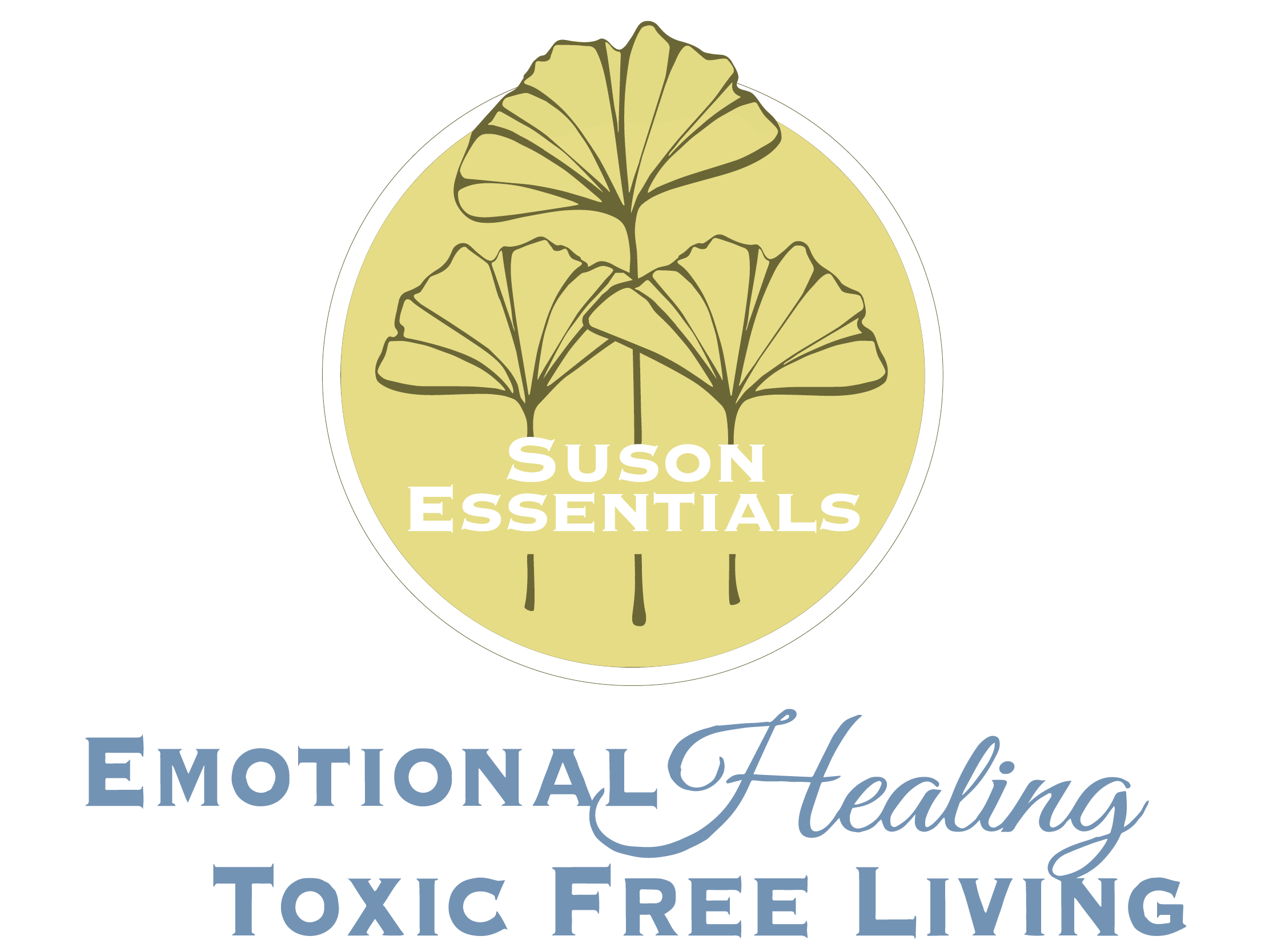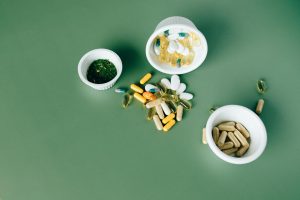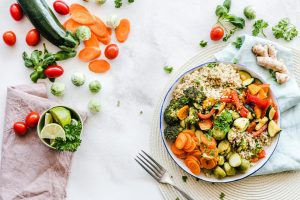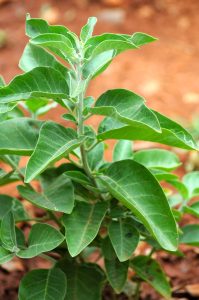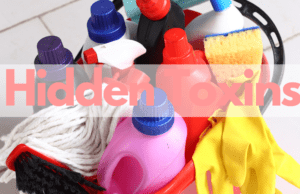
They Would Not Sell It In The Stores If It Was Safe? Right?
We buy things from the grocery stores , drug stores or the home improvement centers and we take for granted that these chemicals will not harm us. Or, we assume since everyone else is using it, IT MUST BE SAFE. Our parents used it, our friends use it and we choose to not connect the dots.
Most of us are unaware that many of these chemicals found in our cleaning, food and water supplies are banned in other countries.
What if you could connect the dots to the household items that you are using to your emotional wellbeing and your energy levels? What if you could connect the dots to the pain that you have?
What if?
Would your life change for you? What would you do differently?
Would you go out on that date? Play with your children or pets? Would you simply go for a walk pain-free? Would you release your fears of living day to day?
Would you be living the dream that you had as a young child or adult?
Well, the world is your oyster, and all you have to do is take the next step to change your life and not let any pre-programmed ideas or thoughts get in your way.
Spoiler alert – things will try to interfere if you let it. Trust me. We like the old way of doing things because it is comfortable and it somehow some of us are afraid of change. Consider that change is the catalyst for a new beginning…. Your New Beginning!
So, here are the dirty details on many popular household cleaners – they are dangerously toxic! Learn about the 8 scariest substances hiding under your kitchen sink, and how to replace them with safer, more natural options that really work.
EXECUTIVE SUMMARY
Ingredients in common household products have been linked to asthma, cancer, reproductive disorders, hormone disruption and neurotoxicity, which also means PAIN. The article below, written by Jesse Sholl, touches on several of the more common harmful cleaners, and also provides healthy alternatives at the end.
First, I am sorry to say that there is no federal regulation for the chemicals in household products. The average household contains about 62 toxic chemicals.
While a few products cause immediate reactions from acute exposure (headaches from fumes, skin burns from accidental contact), different problems arise with repeated contact. Chronic exposure adds to the body’s toxic load. Here are just 8 of the dangerous chemicals that are in products that people use regularly.
- Phthalates- Many fragranced household products, such as air fresheners, dish soap, even toilet paper contain harmful chemicals called Phthalates. Because of proprietary laws, companies don’t have to disclose what’s in their scents. Phthalates are known endocrine disruptors.
- Perchloroethylene or “PERC” are found in: Dry-cleaning solutions, spot removers, and carpet and upholstery cleaners. Perc is a neurotoxin.
- Triclosan – Most liquid dishwashing detergents and hand soaps that are labeled “antibacterial” contain Triclosan, which is an aggressive antibacterial agent that can promote the growth of drug-resistant bacteria.
- Quarternary Ammonium Compounds, or “QUATS” are found in Fabric softener liquids and sheets, most household cleaners labeled “antibacterial.” Quats are another type of antimicrobial, and thus pose the same problem as triclosan by helping breed antibiotic-resistant bacteria. They’re also a skin irritant.
- 2-butoxyethanol is the key ingredient in many window cleaners and gives them their characteristic sweet smell. According to the EPA, high levels glycol ethers can also contribute to narcosis, pulmonary edema, and severe liver and kidney damage.
- Ammonia is found in polishing agents for bathroom fixtures, jewelry, and glass cleaners. Ammonia is a powerful irritant. The people who may be most affected are those who have asthma, and elderly people with lung issues and breathing problems.
- Chlorine is found in Scouring powders, toilet bowl cleaners, mildew removers, laundry whiteners, household tap water and most swimming pools. With chlorine we have so many avenues of exposure. You’re getting exposed through fumes and possibly through skin when you clean with it, It is in city water to get rid of bacteria and parasites, so you’re also getting exposed when you take a shower, bath, and wash your hands. The health risks from chlorine can be acute, and they can be chronic; it’s a respiratory irritant at an acute level, has been known to contribute to asthma, blurred vision, blisters and a variety of skin conditions.
- Sodium Hydroxide is found in Oven cleaners and drain openers. Otherwise known as lye, sodium hydroxide is extremely corrosive: If it touches your skin or gets in your eyes, it can cause severe burns. Inhaling sodium hydroxide can cause a sore throat that lasts for days.
Ok – are you ready for the deeper dive?
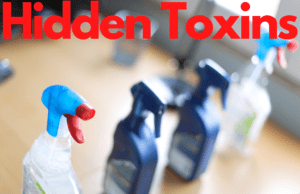
I found this article in 2016 when I was at the tail end of my health journey. I am grateful that someone else was willing to share their story which contributed to my health recovery.
Full article BY JESSIE SHOLL | OCTOBER 2011
When a pain in Beth Greer’s shoulder led her to a chiropractor nine years ago, she wasn’t that worried. After all, she led a healthy lifestyle: She watched her weight, meditated regularly, and ate mostly organic food. Greer’s chiropractor wasn’t worried either; he diagnosed her with a herniated disk. But after three sessions, not only was she not better, but the pain was also beginning to radiate down her arm and into her fingers.
An MRI revealed the true cause of Greer’s pain: a tennis-ball-size tumor in her chest. The good news was the mass was benign. Still, each of the three thoracic surgeons Greer saw strongly recommended she have it removed. One wanted to get at it by going in under her collarbone, one wanted to reach the mass through her armpit, and the third wanted to remove a rib to get the tumor from the back.
They all agreed on just one thing: The surgery was risky. Because the tumor was in such a nerve-packed place, there was a real possibility that removing it could cause Greer to lose feeling in her hand.
Greer opted out of the surgery, and instead focused on doing everything she could to support her body’s healing capacity. Curious by nature (she and her husband, Steven Seligman, owned the Learning Annex, a group of schools offering short-term classes on everything from relationships to real-estate), Greer decided to learn everything she could about her condition and discovered that tumors typically grow in response to irritation and inflammation. Eliminating environmental toxins that might be contributing to her tumor’s growth seemed like a practical first step.
First, she turned her attention to the conventional household cleaning products tucked away in her cabinets. “I’d look at a label and it would say ‘hazardous to humans and domestic animals,’” says Greer. “So why would anyone want to use that?”
She ultimately tossed her entire collection of toxic cleaning products and began making her own with ingredients like vinegar, baking soda and essential oil. She also swapped her commercial body-care products and makeup for nontoxic ones, and she cleaned up her already healthy diet by eating only whole, unprocessed foods — without any labels.
Nine months later, her tumor was gone. Completely. Although she can’t pin her results on any one environmental change, Greer’s confident that cutting down her exposure to toxins played a critical role — so much so that she’s made sharing that information with others a central part of her life.
Today, Greer consults professionally with others who want to detoxify their homes and offices. In 2002 she and Seligman sold the Learning Annex, and she began writing about toxin-free living. The result is her book, Super Natural Home.
During her research for the book, Greer was shocked to learn that there’s no federal regulation of chemicals in household products. Rebecca Sutton, PhD, a senior scientist at the Environmental Working Group (EWG), explains, “In terms of household cleaners, neither ingredients nor products must meet any sort of safety standard, nor is any testing data or notification required before bringing a product to market.”
The average household contains about 62 toxic chemicals, say environmental experts. We’re exposed to them routinely — from the phthalates in synthetic fragrances to the noxious fumes in oven cleaners. Ingredients in common household products have been linked to asthma, cancer, reproductive disorders, hormone disruption, [pain ] and neurotoxicity.
Manufacturers argue that in small amounts these toxic ingredients aren’t likely to be a problem, but when we’re exposed to them routinely, and in combinations that haven’t been studied, it’s impossible to accurately gauge the risks. While a few products cause immediate reactions from acute exposure (headaches from fumes, skin burns from accidental contact), different problems arise with repeated contact. Chronic exposure adds to the body’s “toxic burden” — the number of chemicals stored in its tissues at a given time.
This toxic body burden is EWG’s chief concern about household chemicals. Sutton explains: “Our concern is daily, weekly, chronic exposure over a lifetime. Maybe if you’re exposed to a chemical a handful of times it wouldn’t cause harm, but some chemicals build up enough or cause enough harm in your body over time that it triggers some kind of disease outcome. The concept [of body burden] is that pollution is not just in our air and in our water — it’s also in us.”
No one can avoid exposure to toxic chemicals altogether, but it is possible to reduce it significantly. In the following pages, Greer, Sutton and other experts weigh in on the worst toxic offenders commonly found in household cleaning products, and offer ways to swap them for healthier, safer options.
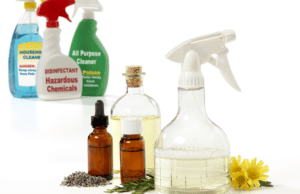
- Phthalates
Found in many fragranced household products, such as air fresheners, dish soap, even toilet paper. Because of proprietary laws, companies don’t have to disclose what’s in their scents, so you won’t find phthalates on a label. If you see the word “fragrance” on a label, there’s a good that chance phthalates are present.
Health Risks: Phthalates are known endocrine disruptors. Men with higher phthalate compounds in their blood had correspondingly reduced sperm counts, according to a 2003 study conducted by researchers from the Centers for Disease Control and Prevention and the Harvard School of Public Health. Although exposure to phthalates mainly occurs through inhalation, it can also happen through skin contact with scented soaps, which is a significant problem, warns Alicia Stanton, MD, coauthor of Hormone Harmony. Unlike the digestive system, the skin has no safeguards against toxins. Absorbed chemicals go straight to organs.
Healthier Choice: When possible, choose fragrance-free or all-natural organic products. Greer recommends bypassing aerosol or plug-in air fresheners and instead using essential oils or simply opening windows to freshen the air. Besides causing more serious effects like endocrine disruption, “Aerosol sprays and air fresheners can be migraine and asthma triggers,” she says. Also consider adding more plants to your home: They’re natural air detoxifiers.
- Perchloroethylene or “PERC”
Found in: Dry-cleaning solutions, spot removers, and carpet and upholstery cleaners.
Health Risks: Perc is a neurotoxin, according to the chief scientist of environmental protection for the New York Attorney General’s office. And the EPA classifies perc as a “possible carcinogen” as well. While the EPA has ordered a phase-out of perc machines in residential buildings by 2020, California is going even further and plans to eliminate all use of perc by 2023.. The route of exposure is most often inhalation: that telltale smell on clothes when they return from the dry cleaner, or the fumes that linger after cleaning carpets.
Healthier Choice: Curtains, drapes and clothes that are labeled “dry clean only” can be taken instead to a “wet cleaner,” which uses water-based technology rather than chemical solvents. The EPA recently recognized liquid carbon dioxide (CO2) as an environmentally preferable alternative to more toxic dry-cleaning solvents. Ask your dry cleaner which method they use.
- Triclosan
Found in most liquid dishwashing detergents and hand soaps labeled “antibacterial.”
Triclosan is an aggressive antibacterial agent that can promote the growth of drug-resistant bacteria. Explains Sutton: “The American Medical Association has found no evidence that these antimicrobials make us healthier or safer, and they’re particularly concerned because they don’t want us overusing antibacterial chemicals — that’s how microbes develop resistance, and not just to these [household anti-bacterials], but also to real antibiotics that we [may or may not} need.” Other studies have now found dangerous concentrations of triclosan in rivers and streams, where it is toxic to algae.
Healthier Choice: Use simple detergents and soaps with short ingredient lists and avoid antibacterial products with triclosan for home use. If you’re hooked on hand sanitizer, choose one that is alcohol-based and without triclosan. [There are many plant based toxic free soaps today and you can use the ewg.org to keep up to date on the best options.]
- Quarternary Ammonium Compounds, or “QUATS”
Found in fabric softener liquids and sheets, most household cleaners labeled “antibacterial.”
Health Risks: Quats are another type of antimicrobial, and thus pose the same problem as triclosan by helping breed antibiotic-resistant bacteria. They’re also a skin irritant; one 10-year study of contact dermatitis found quats to be one of the leading causes. According to Sutton, they’re also suspected as a culprit for respiratory disorders: “There’s evidence that even healthy people who are [exposed to quats] on a regular basis develop asthma as a result.”
Healthier Choice: You don’t really need fabric softener or dryer sheets to soften clothes or get rid of static: Simple vinegar works just as well. “Vinegar is the natural fabric softener of choice for many reasons,” explains Karyn Siegel-Maier in her book The Naturally Clean Home. “Not only is it nontoxic, it also removes soap residue in the rinse cycle and helps to prevent static cling in the dryer.” White vinegar is your best choice for general cleaning; other types can stain.
Alternatives to chemical disinfectants abound, including antibacterial, antifungal tea-tree oil. Mix a few drops of tea-tree oil and a tablespoon of vinegar with water in a spray bottle for a safe, germ killing, all-purpose cleaner. Add a couple of drops of lavender essential oil for scent.
- 2-Butoxyethanol
Found in: Window, kitchen and multipurpose cleaners.
Health Risks: 2-butoxyethanol is the key ingredient in many window cleaners and gives them their characteristic sweet smell. It belongs in the category of “glycol ethers,” a set of powerful solvents that don’t mess around. Law does not require 2-butoxyethanol to be listed on a product’s label. According to the EPA’s Web site, in addition to causing sore throats when inhaled, at high levels glycol ethers can also contribute to narcosis, pulmonary edema, and severe liver and kidney damage. [Well that is an awesome side effect for washing your windows.]
Healthier Choice: Clean mirrors and windows with newspaper and diluted vinegar, [or make a mixture of organic vinegar, water and lemon essential oil to clean the windows, mirrors and other glass. It will also raise the vibration in the home and smell great. You will feel good too! ] For other kitchen tasks, stick to simple cleaning compounds like Bon Ami powder; it’s made from natural ingredients like ground feldspar and baking soda without the added bleach or fragrances found in most commercial cleansers. [Another great way to clean the kitchen pots and pans would be vinegar, water, baking soda with a drop of lemon essential oil. This combination really cuts through the grime and grease. For really tough jobs, just let that plant based concoction sit for a while and work its magic while you are tending to something else. ]
- Ammonia
Found in Polishing agents for bathroom fixtures, sinks and jewelry and also in glass cleaner.
Health Risks: Because ammonia evaporates and doesn’t leave streaks, it’s another common ingredient in commercial window cleaners. That sparkle has a price. “Ammonia is a powerful irritant,” says Donna Kasuska, chemical engineer and president of ChemConscious, Inc., a risk-management consulting company. “It’s going to affect you right away. The people who will be really affected are those who have asthma, and elderly people with lung issues and breathing problems. It’s almost always inhaled. People who get a lot of ammonia exposure, like housekeepers, will often develop chronic bronchitis and asthma.”
Healthier Choice: Vodka. “It will produce a reflective shine on any metal or mirrored surface,” explains Lori Dennis, author of Green Interior Design. [In addition, toothpaste makes an outstanding silver polish as well as lemongrass and lemon essential oils.] The essentials oils leave you and your family feeling much better.
- Chlorine
Found in scouring powders, toilet bowl cleaners, mildew removers, laundry whiteners, household tap water.
Health Risks: “With chlorine we have so many avenues of exposure,” says Kasuska. “You’re getting exposed through fumes and possibly through skin when you clean with it, but because it’s also in city water to get rid of bacteria, you’re also getting exposed when you take a shower or bath. The health risks from chlorine can be acute, and they can be chronic; it’s a respiratory irritant at an acute level. But the chronic effects are what people don’t realize: It may be a serious thyroid disrupter.”
Healthier Choice: For scrubbing, stick to Bon Ami or baking soda. Toilet bowls can be cleaned with vinegar, and vinegar or borax powder both work well for whitening clothes. So does the chlorine-free oxygen bleach powder made by Biokleen. To reduce your exposure to chlorine through tap water, install filters on your kitchen sink and in the shower. [Make sure you are not “green-washed”. Many products make claims that are simply not true. Check with the EWG.org for up to date information on the household cleaning products that are safe for you and your family.] Some of the brands that I like are ECOs, doTERRA, Dr. Bonners, Seventh Generation, and Shaklee.
- Sodium Hydroxide
Found in Oven cleaners and drain openers.
Health Risks: Otherwise known as lye, sodium hydroxide is extremely corrosive: If it touches your skin or gets in your eyes, it can cause severe burns. Routes of exposure are skin contact and inhalation. Inhaling sodium hydroxide can cause a sore throat that lasts for days. [ In 1981 when I was at University of Arizona, my friends and I whitewashed the Arizona “A” Mountain, and the lye ate right through my shorts and I had burns on my inner thighs. Why do we expose ourselves to these chemicals? The answer is that we are not told about the dangers and we are unaware. This all changes for you today. ]
Healthier Choice: You can clean the grimiest oven with baking-soda paste — it just takes a little more time and elbow grease. Unclog drains with a mechanical “snake” tool or try this approach from the Green Living Ideas Web site: Pour a cup of baking soda and a cup of vinegar down the drain and plug it for 30 minutes. After the bubbles die down, run hot water down the drain to clear the debris. [If the pipes are NOT PVC, you can add lemon essential oil to this and get results fast. ]
Beware of Greenwashing
If a cleaning product at your supermarket proclaims itself “green,” “natural” or “biodegradable,” that doesn’t necessarily mean it’s nontoxic. In 2010 the environmental consulting firm TerraChoice Group produced a report called “The Sins of Greenwashing.” In it the group found more than 95 percent of so-called green consumer products had committed at least one “greenwashing sin,” like making an environmental claim that may be truthful but unimportant. “CFC-free,” for example, since CFCs are banned by law. Donna Kasuska of ChemConscious offers this advice: “When gauging ecological claims, look for specifics. ‘Biodegradable in three to five days’ holds more meaning than ‘biodegradable,’ as most substances will eventually break down with enough time.”
DIY Cleaners
Clean your home safely — and cheaply — with the following recipes:
- Basic sink cleanser — Combine ½ cup baking soda with six drops essential oil (such as lavender, rosemary, lemon, lime or orange). Rinse sink well with hot water. Sprinkle combination into sink and pour ¼ cup vinegar over top. After the fizz settles, scrub with a damp sponge or cloth. Rinse again with hot water. (From The Naturally Clean Home, by Karyn Siegel-Maier.) You can also use doTERRA OnGuard Concentrate Cleaner which is a powerful cleaner and I feel it raises the vibration of the home because of the essential oils.
- Oven cleanser— [Love this idea.] Put a heatproof dish filled with water in the oven. Turn on the heat to let the steam soften any baked-on grease. Once the oven is cool, apply a paste of equal parts salt, baking soda, and vinegar, and scrub. (From Super Natural Home, by Beth Greer.)
- Bathroom mildew remover — Good ventilation helps prevent mildew and mold. When they do occur, make a spray with 2 cups of water and 1/4 teaspoon each of tea-tree and lavender oil. Shake first and spray on trouble spots. The oils break down the mildew so there’s no need to wipe it down. (From Green Interior Design, by Lori Dennis.)
- Carpet shampoo — Mix 3 cups water, ¾ cup vegetable-based liquid soap, and 10 drops peppermint essential oil. Rub the foam into soiled areas with a damp sponge. Let dry thoroughly and then vacuum. (From The Naturally Clean Home.)
- Laundry soap— Try “soap nuts” made from the dried fruit of the Chinese soapberry tree. Available in natural groceries and online, the reusable soap nuts come in a cotton sack that goes into the washing machine with clothes. [I also like dōTERRA OnGuard Laundry detergent combined with adding vinegar to the “bleach area” of the washing machine. I also add a 1/2 cup of baking soda to the wash to neutralize the acidity of the water if the water is not filtered. ]
- Dusting— Skip the furniture polishes. Instead, use a microfiber cloth. Made from synthetic fibers that are then split into hundreds of smaller microfibers, they capture dust more efficiently than regular rags. If necessary, a little olive oil makes a fine polishing agent. Two other ideas include Norwex towels and adding lemon essential oil to coconut oil and polish all the wood in your home. Your home will feel so loved by you.
Jessie Sholl has written about health for a variety of publications. She is also the author of Dirty Secret: A Daughter Comes Clean About Her Mother’s Compulsive Hoarding (Simon and Schuster/Gallery Books, 2010).
Co-Authors and C0-Editors – Rev. Jodi Suson and Andrew Calhoun
www.susonessentials.com Hello@SusonEssentials.com
Schedule your free consult Now: https://susonessentials.com/contact/
